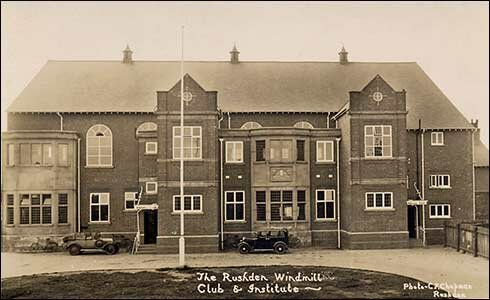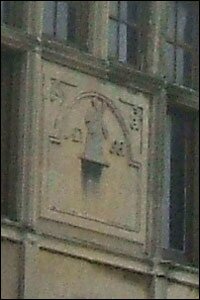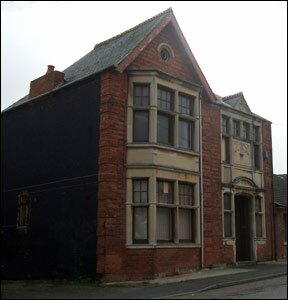The Rushden Echo and Argus, 28th May 1954, transcribed by Jim Hollis
Six cobblers, a barrel of beer began it all
Sixty years ago, half a dozen cobblers met in a tiny white stone mill-house at Rushden, and with them they had a barrel of beer.
This was the humble beginning of the Windmill Club, famous today to Working Men’s Clubs throughout the Midlands and Northamptonshire’s Olympia.
There are two stories about the Windmill Club. So before we go “behind the bar” at the Midlands’ biggest C. and U. Institute building, let’s take a look at the Windmill Hall dance hall, political forum, concert house, sports arena and exhibition emporium all rolled into one.
Few halls in the Midlands can claim to have housed so many different attractions.
Big Bands
Dances, boxing, wrestling, flower shows, dinners, symphony concert, furniture exhibitions, factory parties, political meetings, variety shows, pantos, brass and dance band contests have all been staged there.
In the thirties the Rushden and District Query Motor Club ran a series of charity dances bringing the “big bands” from London. They included Jack Hylton, Roy Fox and Billy Cotton. Once, the club managed to persuade Arsenal manager, Herbert Chapman, to allow the F.A. Cup to be displayed as the crowds waltzed and quick-stepped.
“Young bloods” of those years will remember the glittering carnival queen contests at the Windmill Hall and the glamorous film stars who tripped upstairs to present prizes.
In 1938, twelve Midlands dance orchestras played at the Windmill Hall in the area finals of a national dance band contest. Stage and radio star Bertha Willmott, who lived at Northampton, was a judge.
Then came the war, and in the place of soft lights and sweet music, the excited cries of the boxing fans and the gentle shuffle of exhibition viewers, came the heavy thump of military boots. In turn, British, Canadian and American troops occupied the hall.
Knock-Out Blow
At the end of hostilities, dancing, boxing, flower shows and the rest returned to the Windmill Hall. One of the first big events there was when the Rt. Hon. Clement Attlee addressed 1,000 people shortly before the 1945 General Election. Another was the visit of the famous Halle Orchestra.
A Festival Queen was chosen in 1951 and back came top names in the dance band world Sid Phillips, Nat Temple, Oscar Rabin, Ambrose, Harry Roy and Freddy Randall. Cyril Stapleton made one of his last public appearances there before forming the B.B.C. Show Band last year.
Boxing was promoted at the hall from 1947 until 1952 and many up-and-coming boys fought before the Rushden crowds. Promoter was Mr. W. Furness now president of the Windmill Club.
The fights at one time attracted and average “gate” of 1,000 people, but the high entertainment tax and other factors dealt a knock-out blow to the sport two years ago.
High costs stopped the “big band” dances last autumn, but they may return this year.
Now we’ll go downstairs and look into the other side of the Windmill Club, where last year its 1,432 members paid £30,000 for everything that comes under the title of refreshments.
Several Veterans
Here, there is a warm and happy atmosphere of a successful, well-organised club a club that members never leave. There’s more than a handful that can boast 40 years’ membership.
And it all started just across the road in a patched-up old building that is still standing. From the mill-house the club moved to a nearby tin hut, and then in 1898 the first club building was erected.
It was in 1927, after nearly two years’ building work, that the Windmill Club became established in its present premises. It cost something in the region of £20,000 and not until 1941 was the £8,000 debt paid off.
Justly Proud
Today, the “Mill” members are justly proud of their club. They have special rooms for snooker and billiards, cards, skittles and darts. There is a free lending library which contains 1,000 books, a committee room for the numerous “sub-clubs” angling, horticulture, fur and feather section, sick club, coal club, loan and dividend club.
 |
|
In the bar - steward Ron Kemp draws a pint
|
Aged members and children are also well looked after.
Then there is the large bar and a cheerful smoke-room where “sing songs” go on all the time. Installed in the smoke-room is a £100 Univox the latest type of electric organ attachment to a piano. Every weekend at least 500 members and relations attend the cabaret-dances in the hall.
The Windmill is proud, too, of its hard-working, part-time staff of 12 and the full-time steward and his wife. Four officers and ten committee men undertake the mammoth task of managing the club. They have given “umpteen” years’ service to the club.
Take, for example, the 43-year-old president, Mr. Wally Furness. He has been a committee man since he was 21 and spends seven nights a week at the club. His key helpers are secretary Mr. Jack Milburn and the always necessary “financial wizard” treasurer Mr. L. G. Bland.
But they never rest at the Windmill. “Only the best for our members is our motto,” says Mr. Furness. And the latest improvements are a controlled temperature beer cellar and electric pumps at the bar in the hall.
Those half a dozen cobblers who looked at a windmill sixty years ago and decided on the name of their club could never in their wildest dreams have imagined such success.
|






